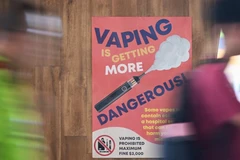WHO’s Regional Director for South-East Asia Samlee Plianbangchang tolda press conference in Jakarta, Indonesia that the worst situationis seen in India, Bangladesh, Sri Lanka, Indonesia andThailand.
According to him, lack of publicawareness and incomplete knowledge about the harmful effects ofsmokeless tobacco are powerful obstacles in creating effective tobaccocontrol policies.
He said smokeless tobacco is themain cause of oral cancer and is associated with high risk forcardiovascular diseases, stillbirths, low birth weight and other somehealth problems.
The WHO said the South-East Asia regioncarries the highest burden of oral cancer with over 95,000 oral cancercases each year, mostly the poor.
Studies inBangladesh, India, Indonesia, Sri Lanka and Thailand have shown thatsmokeless tobacco are more prevalent among the less educated andilliterate population.
The world health body recommended regionalgovernments to pay more attention on anti-smokeless tobacco work,including the involvement of social organisations, in an effort toreduce 30 percent of 15-year-old and above smokeless tobacco users.-VNA























